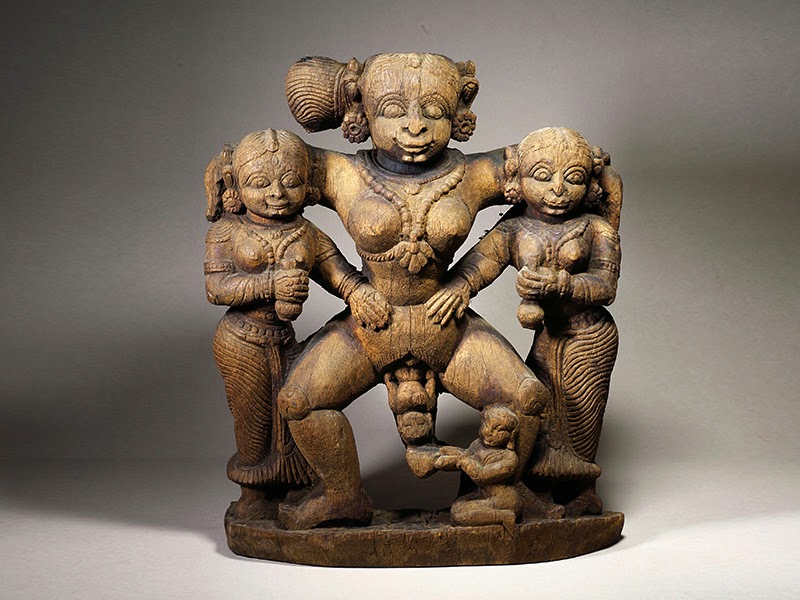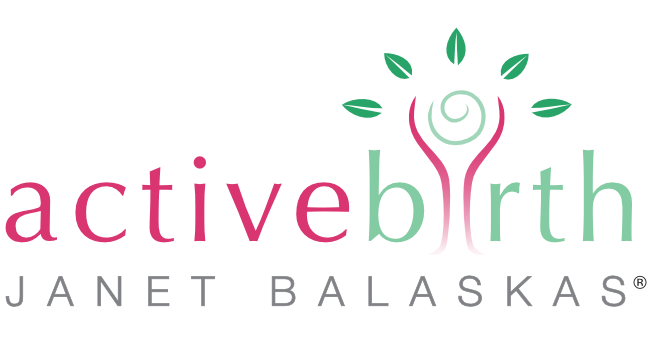
Essentially labour is a dance between mother and baby aided by the downward force of gravity. Now that we have some understanding of the physiology – lets turn to the protagonists.
I believe it is essential that we think of labour starting in the final weeks of pregnancy when baby and mother are preparing, both emotionally and physiologically for the great opening and emergence that is coming.
Since the baby is the initiator of labour I would like to look first at the journey of the baby.
The baby
 In the final weeks of pregnancy the baby is preparing for life outside the womb. The lungs are getting ready to breathe air. The fluid inside turns into bubbles, expanding the air sacs in the alveoli, ready for breathing. A protein is released from the lungs into the amniotic fluid, which reaches the mothers blood stream and is carried all the way to the hormonal centre in her brain carrying the message:
In the final weeks of pregnancy the baby is preparing for life outside the womb. The lungs are getting ready to breathe air. The fluid inside turns into bubbles, expanding the air sacs in the alveoli, ready for breathing. A protein is released from the lungs into the amniotic fluid, which reaches the mothers blood stream and is carried all the way to the hormonal centre in her brain carrying the message:
I am ready to be born… to breathe for myself … you can start to increase the oxytocin and let me go!
As the days go by the baby feels more and more confined, at the same time snug and safe inside and also with an urgent impulse to get out – to leave. With no space to move, he or she becomes strangely still at times, head pressing deep into the lower segment of the uterus stimulating the gradual softening – getting ready for opening. Instinctively the baby aligns the widest diameter of its head (back to front) with the widest diameter of the pelvic inlet (side to side)
Finally, in a moment of stress the baby releases stress hormones from the adrenal glands that end the pregnancy. This causes a surge of oestrogen in the mother that suppresses the progesterone that maintained the pregnancy. Miraculously hundreds of new oxytocin receptors appear on the upper segment uterus in the last days before labour starts as the result of this oestrogen surge.
During the labour the cocktail of love hormones are for the baby too, calming, relaxing, soothing, reducing the need for oxygen. The sounds and rhythms of the mother’s breathing, the movements of her body, blend into harmony with the rippling muscular contractions of the uterus around the baby’s body.
The baby’s head is tucked in towards the chest so that the crown is the presenting part. I believe that the so called ‘neonatal crawl reflex’ is present already, limbs stimulating the uterus and the bobbing of the head in this position causing little nudges as the baby burrows down and goes deeper into the dark tunnel. There is a drive to descend, to continue to reach the light at the end of the tunnel. The baby goes deeper and deeper down into the pelvis.
Affirmation for the mother:
My baby fits my pelvis perfectly.
Finally the top of the baby’s head reaches the pelvic floor. The soft bowl shape of the muscles of the pelvic floor assist the baby to turn by 90 degrees, so that the widest diameter of the baby’s head now lines up with the widest diameter of the pelvic outlet (front to back). There is a stillness – a pause – momentary or longer, marking the end of labour. Ready for birth!!
Affirmation for the mother
I whisper to my baby – well done darling, you are nearly in my arms – I can’t wait to hold you and see you!
The mother
 At full term, her swollen belly is huger than she could ever have imagined possible, majestic in its richness, full of mystery except for the certainty and turbulence of those strong movements inside of her baby, fully formed and almost ready for birth
At full term, her swollen belly is huger than she could ever have imagined possible, majestic in its richness, full of mystery except for the certainty and turbulence of those strong movements inside of her baby, fully formed and almost ready for birth
These final days of pregnancy are special. She is starting to let go of the woman she has been and is anticipating the mother she is already becoming.
Her attention is drawing inwards, closer to home. She is gently drifting into a change of consciousness… she feels ‘spaced out’ … different. The love hormones of birthing are rising, washing away anxiety and causing more contractile activity in the uterus that comes and goes – familiar yet strange sensations, mild and more intense than usual. She wonders is this the beginning? And then it stops.
She is waiting… nothing she can do but rest and dream of the moments coming soon when she will see her baby for the very first time. She dreams of holding her child in her arms close to her heart against her warm body, of gazing into those wonderful big dark eyes. The time when love and tears of welcome will flow.
Then the time comes when the mother enters her labour – waves of contraction become stronger and more intense as they peak. The floods of love hormones flowing into in the mothers bloodstream transform the intensity of the sensations she feels, so that gradually she enters an almost trance-like state women often call ‘the zone’. Here she can forget the world and turn inwards, so it is just her and her baby dancing together in the waves of the labour – resting when they subside.
I remember – upright and leaning forward!
I move – I dance – I am helping my baby to move down!
This is the great opening she has been waiting for – as she rocks and moves her body, she relaxes deeply, surrendering, softening releasing inside – and the feelings become at times almost orgasmic – now in the heart of the intensity, she hears the words of wisdom inside herself
I follow my breathing
I trust my body and do what it tells me to do
I can do this
I let go
The journey intensifies, waves are coming thick and fast – yet there is no sense of time
I feel the earth
Each wave is bringing my baby closer
Now the waves are so close together and so intense. What could have been pain becomes ecstasy – its like being in the galaxies – surrounded by stars. A peak of love hormones.
So deep into the heart of labour – so far into trance and profound relaxation. The moments before birth are finally here, but the mother has no sense of where she is or where she is going. Time is meaningless.
Suddenly there is an explosion of Adrenalin – a huge rush – but this time its not disturbance – it’s a physiological response intended to trigger the birth reflex. A wake up call for mother and baby – get ready to meet each other!
As her heart rate increases and blood courses through her body, the mother may feel an intense adrenalin rush, a ‘physiological fear’ (Michel Odent), her mouth becomes dry, she could drink a whole glass of water, the pupils of her eyes dilate. And on this dramatic note labour comes to a close and birth begins.
There is perhaps a feeling – I am dying – as labour ends. And indeed the pregnancy is being left behind and the future as a new mother or mother of a new baby is just emerging.
She may feel a temporary despair as this profound hormonal change occurs inside –a death to what has become familiar and a hint of the unknown simultaneously. It is excitement and fear at the same time – extremes of intensity.
The mother’s body is fully open on the brink of birth – of letting go to a new life.
Affirmation:
This baby is coming through me not from me – I am ready to let me baby go.
If I could wave a magic wand
My wish would be that birth attendants and pregnant woman and their partners alike could understand all of the above.
I would like to see a much more relaxed attitude to the start of labour, so that all of the essential processes taking place in mother and baby at the end of pregnancy can fully complete, leading to a more effective labour.
Completion of pregnancy and beginning of labour overlap until pregnancy is left behind and labour strengthens naturally. So too labour and birth overlap until labour is left behind and birth is under way. The whole process of birth is a series of physiological transitions, each one inherent in the next.
A hormonal labour usually leads to a quick and efficient birth. (Michel Odent calls this a ‘foetus ejection reflex’) At this point there is nothing the mother needs to do other than adopt any upright posture leaning forward and surrender so that birth can happen by itself. A truly hormonal birth is an involuntary reflex rather than a second stage.
The final moments of labour are the key to this. If we can manage not to disturb, not to try and help, not to observe, not to rescue the mother in any way in a matter of minutes she will be holding her baby in her arms glowing with ecstasy – the dark depths of labour already forgotten.
I believe that many of the problems and difficulties women in our culture experience in labour start with the disturbance of the sensitive transition from pregnancy into labour, particularly with the provocation of anxiety due to the threat of chemical induction. The body and mind have no chance to prepare… A bit like a symphony with no rehearsals and the performance brought forward unexpectedly – we cannot expect the music to be harmonious!
 A hormonal natural labour is a rich and ecstatic experience for many women – its certainly challenging and also hugely rewarding. The suffusion of love hormones for mother and baby in the hours of labour can never be replicated. Nature intends this as the basis for a deep physiological love that will last a lifetime.
A hormonal natural labour is a rich and ecstatic experience for many women – its certainly challenging and also hugely rewarding. The suffusion of love hormones for mother and baby in the hours of labour can never be replicated. Nature intends this as the basis for a deep physiological love that will last a lifetime.
The love hormones do continue into the postnatal period when breastfeeding, carrying or through skin contact. So for those mothers who cannot have a natural labour for good reasons, this can be a way to compensate as much as possible.
Procedures such as unnecessary induction of labour and elective Caesarean Section Birth that are prevalent in our society bypass hormonal labour.
When they are not truly indicated, they rob mothers and babies of all the benefits nature intends for them. These include physiological, emotional, psychological and immune benefits that form the basis of a healthy and happy life.
A natural birth is joyous. It brings the baby a sense of safety, connection and love that is the birthright of every human being. It brings the mother a sense of pride and empowerment so that her journey into mothering begins with all the advantages and benefits brought by her own natural hormones. Above all it gives her a physiological sense of connection with her child that makes mothering easier and more loving.


Pingback: Relaxing Music for Giving Birth – LJ Rich